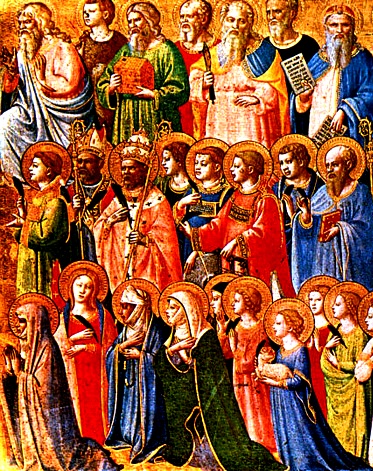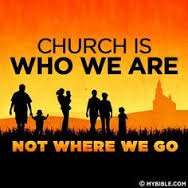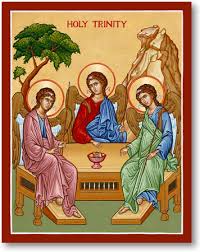Much will be written in the coming days about the double-canonization of two twentieth century popes: John XXIII and John Paul II. As these two popes are elevated to sainthood, many will reflect on their lives and their witness of faith. We’ll even have some posts here on CMT.
But this post is about a more fundamental question: why canonize anyone at all? What’s the point in having a tradition of reverence for saints? Do we need this tradition in our contemporary church?
This is actually not a new question. In his 1985 book Dynamic Catholicism: A Historical Catechism, Thomas Bokenkotter remarks:
The whole canonization process has been called into question lately. Its emphasis on the miraculous, for instance, appears medieval. Critics also point out how the bureaucracy tends to produce saints that reflect its own clerical mind-set, with little appeal to the average Catholic. A simple glance at the present calendar of saints, in fact, shows how thoroughly the clergy have monopolized it. A saint, one might conclude, is any notably pious European who founded a religious order in the post-Reformation period. Recent canonizations underscore the advantage. In the period 1965-1975 there were 62 persons canonized. 40 of these were martyrs–priests, religious, and lay folk–from the Elizabethan period in England. Individuals canonized numbered 22, of whom 8 were women founders of religious orders and the rest were men founders, with the exception of an archbishop. Not a single lay person! … [One may argue that] canonization has become largely irrelevant. The assumptions governing it no longer are operable for the great majority of Christians. People are no longer inclined to veneration of the saints in the sense of rendering them prayerful homage. Decline in this kind of devotion is too obvious to need proof. (156-157, citing in the second section the work of Lawrence Cunningham, The Meaning of Saints, 1980, 17).
Almost thirty years later, these same concerns continue to surface in many reactions to this weekend’s celebrations in Rome. The focus on miracles seems more like the magic of Disney than the laws of science; the secrecy and legalism of the process provoke intrigue; and here we have two white European men raised up as role models for a church that is increasingly non-European and lay. So is this whole process outdated, archaic, a thing of the past? What exactly do we celebrate in this tradition?
In Richard McBrien’s Catholicism, he explains that there are at least four different meanings of the word saints:
(1) all those who have been justified by the grace of Christ, whether they be living or dead;
(2) those who, having been justified by Christ on earth, have entered into eternal life;
(3) particular figures, especially biblical personages, who are examples of holiness;
(4) those whom the Church, either through custom or formal canonization, has singled out as members of the Church triumphant so that they may be commemorated in public worship (1109-1110).
The cult of the saints developed as a practice in the first 100 years of the Jesus movement, as his followers remembered not just the ministry and death of Jesus but also the life and teachings of his followers, especially those who had paid the ultimate price for their faith in Jesus as the Christ. The martyrs were reverenced in early liturgies. McBrien explains:
Veneration of the burial sites, pilgrimages to places where the martyrs had lived or died, adoption of a saint as a patron of a church or town, belief in the power of the saints to perform miracles on behalf of the living–all these practices developed very early in the Church’s history (1111).
More recently, the Second Vatican Council Dogmatic Constitution on the Church explained that the saints offer an “example in their way of life, fellowship in their communion, and aid by their intercession” (no. 51). McBrien, drawing on Karl Rahner, develops this more fully as he continues:
The Church’s veneration of saints is a necessary part of its life and work. Otherwise, there would be a danger of looking upon sanctity as an abstraction. The saints help us to see how the Gospel can be incarnated and lived in many different ways and under many different social and historical circumstances. The basic mystery of Christianity, after all, is not that God has created a world different from God and in which God must be served and glorified, but rather that grace, which is identical with God, has “permeated the world with God’s own presence” (McBrien, 1114-1115, drawing on Rahner, Theological Investigations, vol. 8: “Why and How Can We Venerate the Saints?” 1977, 23).
I think this is an important point: the danger of sanctity as an abstraction. One of the things that is so interesting about the Catholic tradition of venerating saints is that there are so many and each one is unique. Some died young, some were old at death; some were brilliant scholars, most were not academics at all; some were great orators, some were shy; and so on and so on. There is not one way to be a Christian, and there is not one way to be a saint. But when we learn more about the particulars of each saint’s life story, the struggles and the successes, the virtues and the vices, we can have a greater sense of the variety of ways of living out the gospel in our own time. We can approach diversity in spiritual traditions with an eagerness to learn and ask what resonates with our own deepest questions.
Beyond the simple recognition of diversity, another important feature of this tradition is the reminder that each saint is human. These women and men are holy, yes, but no one was perfect. Dorothy Day is said to have remarked, “Don’t call me a saint. I don’t want to be dismissed so easily.” It is important for us to remember the humanity of the saints even as we raise up their lives and remember their witness. This week, the editors of National Catholic Reporter remind us:
If we fully honor our saints, then we honor them in all of their humanity, which means in all of their flaws as well as their greatness.
One of the ways the humanity of the saints shines through is in their thirst for life, their joy in the everyday. One of my favorite reads lately is Jesuit James Martin’s Between Heaven and Mirth: Why Joy, Humor, and Laughter Are at the Heart of the Spiritual Life. In chapter three, “Joy is a Gift from God: Humor and the Saints,” Martin tells the stories of saints who serve as role models not because of their deadly seriousness and pure piety but because of their joyful, laughter-filled lives. Martin gives the example of St. Teresa of Avila who prayed, “From somber devotions and sour-faced saints, good Lord, deliver us.” He goes on:
The happiness of the saints flows from their closeness to God and from the perspective on life that their faith brought them. Typically, they have also lived out their heartfelt desire to follow God, and so they find joy… Humor seems almost a prerequisite for sanctity. The saints knew to take the long view of things, were quick to laugh at life’s absurdities (and at themselves), and always placed their trust in God.
One of John XXIII’s well-known jokes came when a reporter asked him, “Your Holiness, how many people work in the Vatican?” John paused, thought it over, and said, “About half of them.”
So, is canonization irrelevant? I don’t think so. In our culture we have a cult of celebrity; we venerate pop stars and celebrity chefs, football players and actors. In contrast, the Christian saints provide some balance and authenticity, but they aren’t just people we admire. We see them as role models. Even Bokenkotter concedes the point:
People still need saints: men and women whose lives are inspiring examples of Christian commitment and signs of God’s grace in the world…. The Church obviously needs such heroes, courageous spirits who not only witness to the vitality of the Christian tradition but provide models for new ways of living it (157).
Suggestions for Further Reading:
- Robert Ellsberg, All Saints: Daily Reflections on Saints, Prophets, and Witnesses for Our Time
- Robert Ellsberg, Blessed Among All Women: Women Saints, Prophets, and Witnesses for Our Time
- James Martin, S.J., My Life with the Saints
- Elizabeth Johnson, Friends of God and Prophets: A Feminist Theological Reading of the Communion of Saints





Trackbacks/Pingbacks